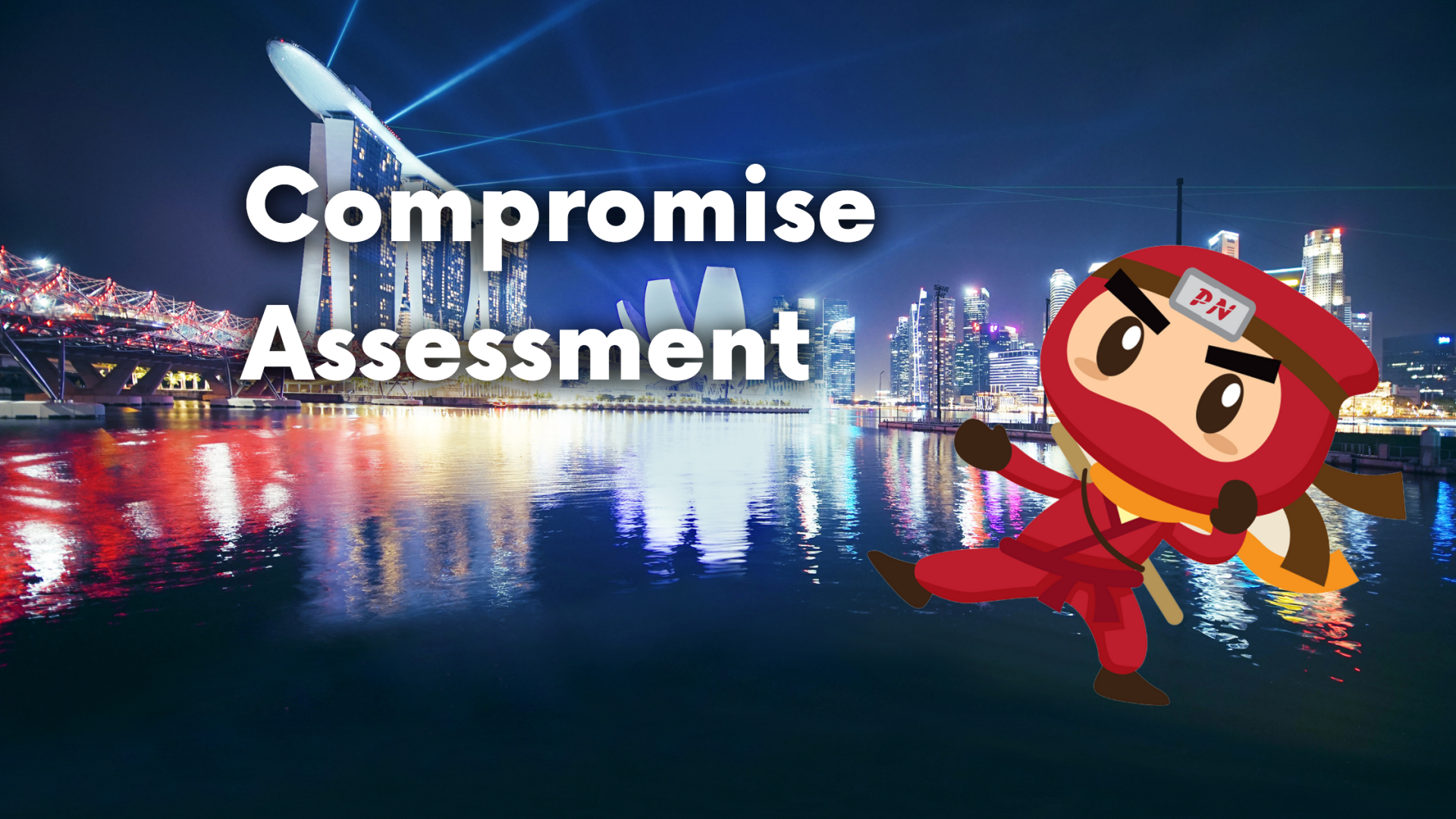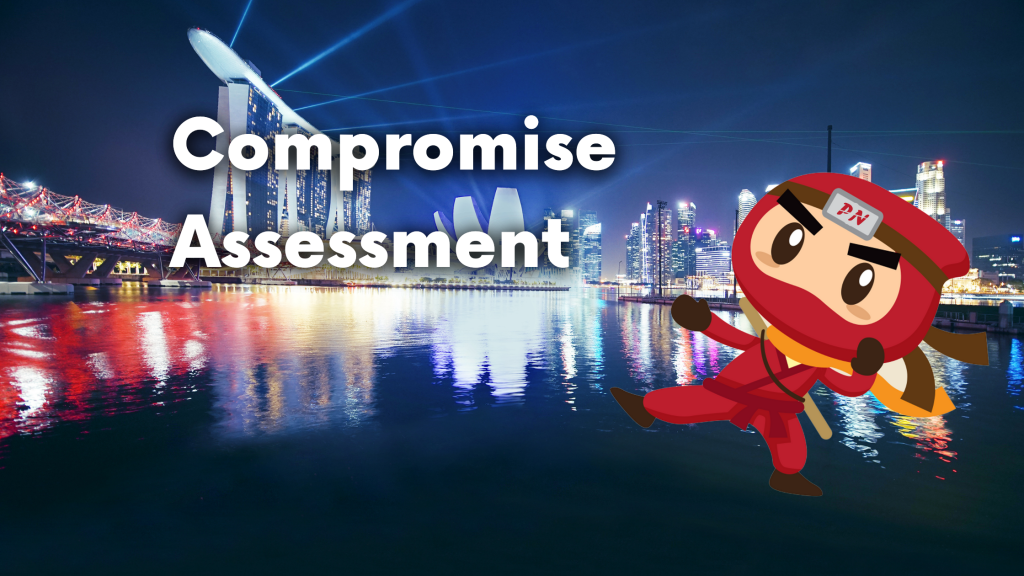KEEP IN TOUCH
Subscribe to our mailing list to get free tips on Data Protection and Cybersecurity updates weekly!







Bad actors are continuously lurking and waiting for the perfect moment to unleash their unhinged well-though off attacks. They work silently and stealthily, seeking possible vulnerabilities that they can exploit and start their journey towards compromise.
There could be no telling at its face if such bad actors are already exploiting a vulnerability in an organisation’s system. Usually, the organisation does not even know that it is already breached. With this, it is essential to know in great detail whether bad actors are already residing within your system, waiting for the most efficient time to attack.
This can be done through a Compromise Assessment and here are 5 things every organisation should know about it.
Also Read: A beginner’s guide to the Singapore PDPA

Compromise assessment (CA) is a security assessment that analyses multiple security measures to answer the key company security operational question, “Are we breached?”
A CA performs a high-level review and audit of the organization’s networks, applications, infrastructures, and endpoints based on suspicious user behaviors, logs, compliance policies, Indicators of Compromise (IOCs), or any evidence of malicious activity to identify attackers active in the current environment or the past.
It aids in determining whether network security or systems are hacked, and such potential breaches can be discovered within your business.
Unwanted visitors will jeopardise the security of your establishment. Once in our network and systems, it is difficult to tell when the attackers will make their next move. They may be inactive or aggressively exfiltrating important information assets from your business. They will remain a menace as long as they choose to remain persistent within your network.
Unauthorized activities can cause significant financial losses and damage to your company; executing a thorough Compromise Assessment will help ensure that your environment is clean.
Vulnerability Assessments look for flaws in a single subject; Compromise Assessments look for any symptoms or probable evidence of compromises in your overall infrastructure. Consider your infrastructure as a house.
Vulnerability Assessment analyses the security of your doors, windows, and fence design, but we cannot tell if there are any bugs in the house. Vulnerability Assessment focuses on determining the efficiency of Controls security, such as the locks on the doors or windows.
To determine whether unwanted pests are living in your home, we must conduct a Compromise Assessment where we will search behind the walls, beneath the floor tile, the area between the roof and ceiling, and even the pipes under the kitchen sink for any unwanted pests. The same idea applies to a professional Compromise Assessment on corporate infrastructure. A compromise assessment should encompass all aspects of corporate infrastructure, including endpoints, network devices, servers, IoT devices, and more.
Vulnerability Assessment and Compromise Assessment provide a different function of security scanning, engaging with a professional cybersecurity expert to carry out the specified responsibilities to satisfy your organization’s business objectives.

Compromise Analysis is a combination of manual and automated analysis efforts. Software alone will not detect compromise or indicators of compromise. To ensure that we do not miss any potential concealed risks, we need human intelligence to unearth even the smallest bits of clues during breach evaluation.
As a result, organisations should only work with Professional assessors that have vast experience in Incident Response, Threat Hunting, Digital Forensics, and Malware Analysis.
Compromise Assessment is not simply deploying a different Endpoint Detection and Response (EDR) Scanner brand. Many aspects must be examined before introducing another brand of EDR into a work environment.
The following are the business-critical questions that we need to address:
Compromise Assessment may be a new form of exercise in the local market. Many vendors simply assume that by deploying EDR tools, they will be able to deliver a compromise assessment. This is misleading and dangerous; it creates the illusion that it can do a compromise assessment by bringing in branded EDR products or product principles.
Compromise Assessment is more than just using a new Endpoint Detection and Response (EDR) Scanner. Many factors must be considered before introducing a new type of EDR into the workplace.
The following are the essential business questions that must be addressed:
In the local market, Compromise Assessment may be a new type of activity. Many vendors believe that by adopting EDR tools, they will be able to provide a mediocre assessment. This is deceptive and harmful because it gives the impression that bringing in branded EDR products or product principles allows for a compromise evaluation.
Simply adopting a different brand of EDR software may have an influence in the following areas:
Organizations should have the following in place to conduct an effective compromise assessment:
An effective compromise assessment must encompass all perspectives of potential hacker hiding locations. This essentially means that we will cover all infrastructure layers: network, application, and servers, as well as investigate prior occurrences inside the system. A combination of commercial and proprietary tools will be used to complete the compromise evaluation.
Be wary of merchants who recommend bringing multiple brands of EDR into your area. Specifically vendors who are also resellers of such EDR goods. In this scenario, their goal is clear.
Visibility is the most important success factor in security management. We can’t manage what we can’t see.
The more time we have between compromise evaluations, the more visibility we will have on our infrastructure. We recommend that you perform a compromise assessment at least once a year.
Your organization’s risk management methods determine the frequency with which you undertake a compromise assessment. Hackers create new tactics and tools to infiltrate systems at an exponential rate.

Aside from your Vulnerability Assessment needs, Privacy Ninja also offers Compromise Assessments for organizations.
Privacy Ninja helps organisations assess their cybersecurity posture and provide a detailed assessment of whether there are any malicious activities within their systems or whether there is already a history of unauthorised access before, which is believed to be by a bad actor.
What are you waiting for? Contact Privacy Ninja now and check if you are at risk of any compromise.